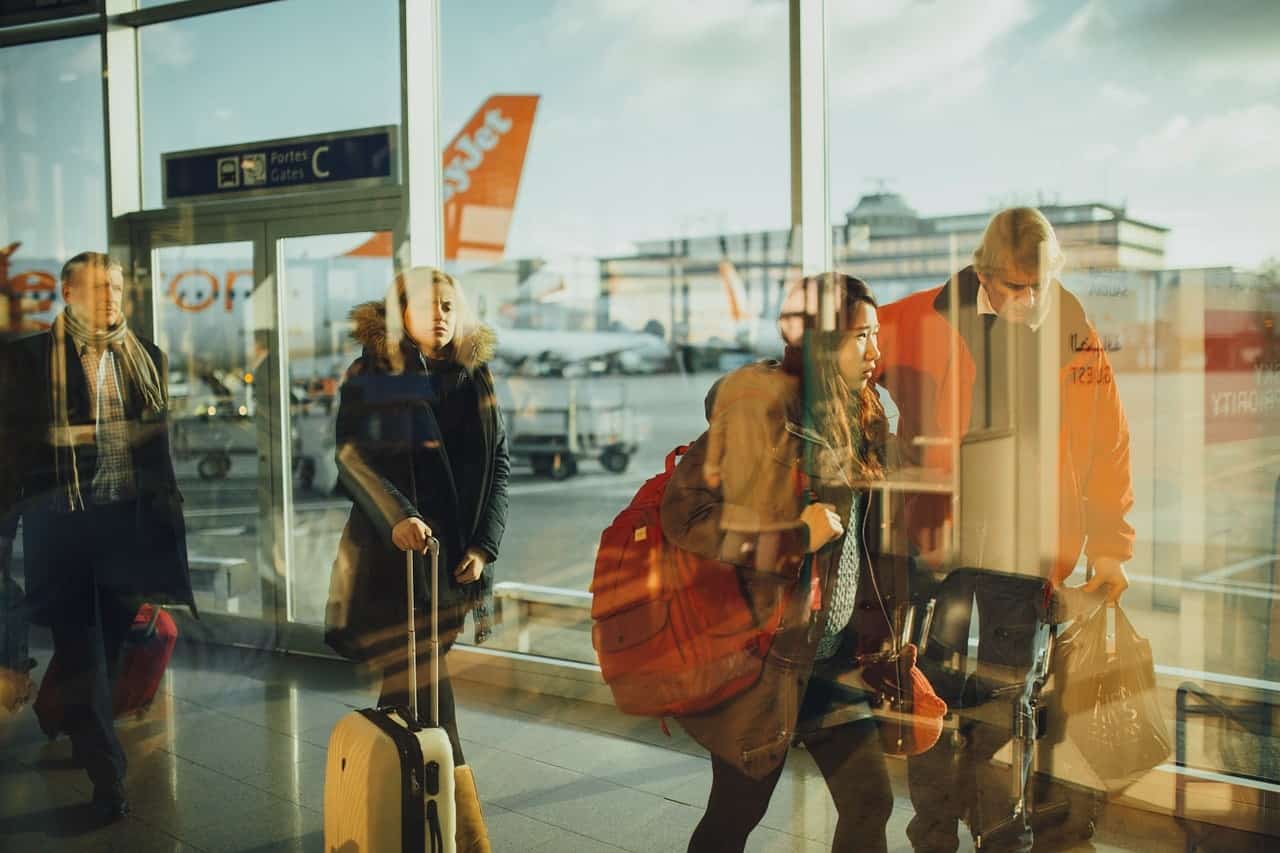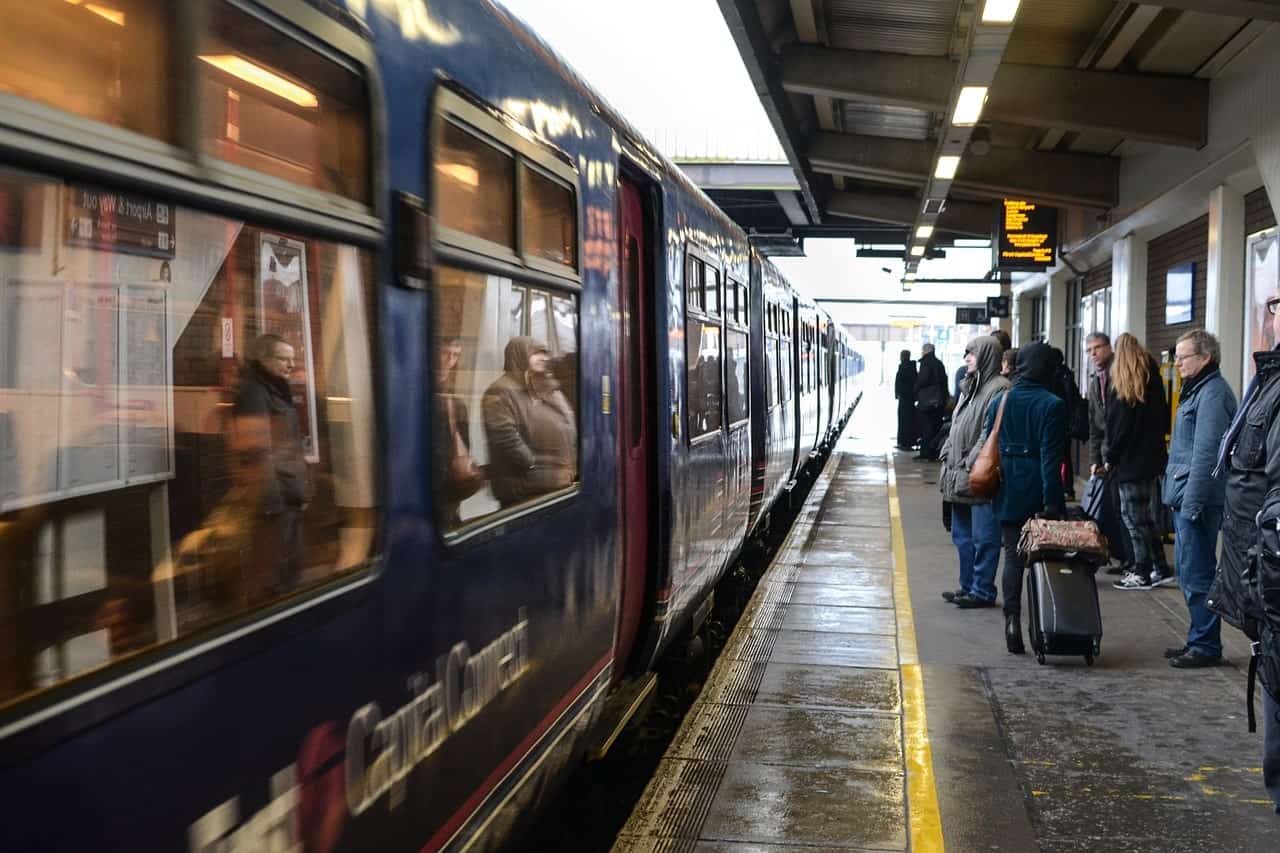
‘Let your memory be your travel bag’ – Alexander Solzhenitsyn, winner of the Nobel Prize for Literature
As a Soviet-era essayist wrongly imprisoned for the political content of his writing, Solzhenitsyn has a valuable opinion on travel: it’s not about the items you take with you or collect along your way.
Put another way, the more you clutter your journey, the less you gain from it. As an avid traveler, I use minimalist packing tips to pare down the load I bear.
I won’t say I’ve never kicked myself after forgetting something specific, but I’ve never returned from a trip wishing I had brought more luggage.
To avoid any confusion, I need to point out that this is not a backpacking article. That is a totally different discussion.
But, if you’re interested in some packing tips to pare down your belongings when journeying by planes, trains, and automobiles, read on.
Let’s dig into our packs and sort the must-haves from the better-left-behinds.
Table of Contents
Ounces Matter: What to Leave Behind
I’m a minimalist. For me, if I have to think twice about bringing it along, it gets left behind.
Each person will ultimately decide what makes the cut, but some recurring offenders end up dead weight.
Let’s start with some commonly packed items that should be reconsidered.
Items You Didn’t Use LAST TIME
I know this isn’t a definitive component, but it’s an excellent exercise to undertake each time you pack.
Some items get grandfathered into the packing list because of the mentality that you ‘always bring that.’
While that’s not necessarily a bad thing, it shouldn’t be a rule. Styles and habits change, technology upgrades, and situations fluctuate.
Also, beware of travel-oriented gifts you received or items you purchased individually for traveling. The is similar to the economic concept of a sunk cost.
Just because you have the thing and will never use it unless it’s during a trip, doesn’t mean you should bring it.
For instance, if Uncle Cedric gave you an excellent new camera but you always end up taking pictures with your phone, consider leaving that Motorola behind next time.
Large Electronics
When it comes to considerations of weight and practicality, tech can be a double-edged sword.
While small electronics like a phone or a tablet are almost modern necessities, larger ones are better left at home.
Unless you need it (e.g., for work), don’t bring a laptop. Even light ones add 4-5 pounds to your pack, plus the significant expense increases your risk.
If you need a keyboard, consider a Bluetooth one that you can sync to your phone or tablet.
Another place that electronics can weigh you down (physically, emotionally, spiritually) is in the accessory department.
While a phone charger might be a must-have, a cordless mouse or a selfie stick probably isn’t.
Also, don’t bother packing redundancies. If you ever find yourself without a charger, ask a hotel front desk.
They will have a whole drawer that guests have deserted in rooms upon check-out.
Books
I know. This one kills me. I’m an English literature major and a freelance writer. I adore books. But, paper is heavy and bulky.
A single 400-page paperback can add up to five pounds to your pack.
Explore some other options like e-readers (e.g., Kindles) and audiobooks (e.g., Audible).
Also, if you’re going to be traveling through airports and train stations, consider picking up a book on the way and then selling it or gifting it to a local book bank or even a friend you make along the way.
I know that isn’t very economical. This is an article about minimalist packing tips, not traveling on a shoestring.
Excess Footwear
Weight-wise, you can get away with a little indulgence in the extra T-shirt department. Not so, for footwear.
Shoes are heavy, bulky, expensive, and easy to mess up. For these reasons, buy well-made shoes that multitask.
If you’re worried about coordinating (and you don’t need to be), dress from the bottom up.
Consider your itinerary, select the mandatory footwear, and then fill in the rest of the ensemble.
Ideal travel shoes can be worn all day, endure a modest amount of moisture, and still look a little attractive. Consider wearing the best shoes for your foot type.
If you need a pair of travel shoes, for example, try to pick one that is versatile and that you can use in different situations. Loom Travel Shoes are super comfy, waterproof, and breathable, which is ideal for traveling.
My M.O. is to wear running shoes; pack brown, casual slip-ons that I could wear with chinos and a pair of sandals.
Jewelry & Bulky Toiletries
I don’t have too much to pare down in this department, but some travelers can drop some serious weight and bulk by consolidating the vanity items.
Consider two separate questions: What can I leave behind? And what can I take less of?
For instance, you may be able to completely omit the hairdryer and carefully measure out just enough shampoo and conditioner into travel bottles.
Besides weight, there are other important reasons to leave this sort of stuff safely at home: loss prevention and risk management.
Jewelry may have a high dollar value, hold sentimental worth, or even be irreplaceable.
Wearing or displaying expensive things also makes you a more appealing target, which may put other belongings at risk – or even your safety.

Packing Tips: What to Bring Along
Now that you’ve ditched the newbie-gear, let’s make sure you haven’t omitted any necessities.
While each person is the ultimate arbiter of the must-have list, here are a few things I bring with me to every destination.
1 ID and 1 Credit Card
The average American has more than a dozen payment cards and IDs at any given time: driver’s license, passport, debit card, credit card, credit card, Starbucks gift card… you see where I’m going.
There are two huge problems with traveling without first cleaning out your purse or wallet.
First, forms or payment and IDs are notoriously hard to replace while traveling.
Second, if lost or stolen, they put you at a higher risk of identity fraud, which can be even more dangerous if you’re abroad.
Do some research and carefully select the ID that you need.
The US State Department recommends bringing only one credit card on international trips.
Leave what you can at home, and take the credit card that maximizes travel miles.
Layers
The secret is to a travel wardrobe is layering: allowing you to accomplish versatility with minimal weight and bulk.
Avoid bringing multiple versions of the same type of clothing.
To quickly see the difference layering make, consider these two examples, each with four pieces:
Example A) 2 T-shirts and 2 Sweaters
Provides you a maximum of three unique options: T-shirt only, sweater only, and T-shirt + sweater.
Example B) 1 T-shirt, 1 Polo, 1 Fleece, and 1 Light Jacket
It affords you a minimum of eight options that vary styles, provides comfort and cover a broad range of temperature conditions
Items You Can’t Buy
No matter how financially well-endowed and savvy you are, there are certain things you will be hurting for if you forget them.
Prescriptions
From medication to corrective lenses, these items are mandatory for health, comfort, and sometimes life.
They’re expensive and potentially difficult to obtain when you’re away from home.
Put items like prescription medication on a physical checklist and plan some redundancies in case you’re in a bind.
This might include a prescription refill tucked into your purse or a pair of contact lenses hidden in a separate zippered pouch.
Personal & Emergency Information
The most important things you take with you may take up no weight at all.
Consider keeping all of these pieces of information written down in one physical place (e.g., a small notebook in an interior pocket) and one electronic place (e.g., the notes section of your phone):
- Personal emergency contacts
- Emergency and essential contacts local to your destination(s)
- Passport and driver’s license number
- Medical Insurance card with Member ID and Group Number
- Travel insurance policy info
Having access to this information doesn’t expose you to many risks but could make a massive difference if you run into an emergency while traveling.

How to Pack & Protect
Now that you’ve weeded the must-haves from the better-off-not, let’s take a moment to consider how to pack and protect your valuables.
Go Strapped
What I’m talking about here is ditching the suitcase for a backpack.
Far from the hobo-sacks of the Woody Guthrie days, modern backpacks are efficient, versatile, and secure. With a pack, you keep the bag off the ground and close to your body.
If you’re going to use a backpack as your only piece of luggage, I suggest what is usually referred to as a ‘Day-and-a-Half-Pack.’
This category of pack is larger than a bookbag/daypack but smaller than a full-scale framed backpack.
These packs offer many or all of the same bells and whistles as a frame pack, including external water-bottle holders, a hip belt, and a sternum strap.
Of course, your physique, agenda, or personal preference may make this luggage ill-advised.
In that case, the combination of a rolling pullman and a smaller backpack/satchel is probably the most effective.
Protective Cases & ‘Find My Phone’ Apps
For reasons ranging from finance to convenience to safety, it’s crucial to secure and protect your electronics when you travel.
Invest in protective cases from suppliers like Otterbox and Lifeproof. Avoid common mistakes like leaving your phone in the seatback of your airplane seat.
Allow the permissions (e.g., Google Sync) that will enable you to find your phone or other devices if they are lost or stolen.
You may even want to physically tether small electronic devices to your luggage when they’re not in your hand.

Closing: Pack Like Solzhenitsyn
Ok. I don’t know the man’s travel habits. But his quote from the first of the article rings true with me.
The less you clutter travel with belongings, the more you open yourself to the experience.
So, use these minimalist packing tips to pack like every ounce matters and then have yourself an adventure.
Once you get back, I’d love to hear about it. See you out there.
A firm believer that freedom of information improves business, travel, and life, Johnny Jet contributor Ben Lovell is committed to sharing best practices.
Planning a trip? Go Backpacking recommends:
- G Adventures for small group tours.
- Hostelworld for booking hostels.

Chaya Deb
Monday 17th of June 2019
Thanks for this guide DAVE. I was planning for to travel to see new 7 wonders but I had not know backpack tips. You have help me a lot man. Again thanks